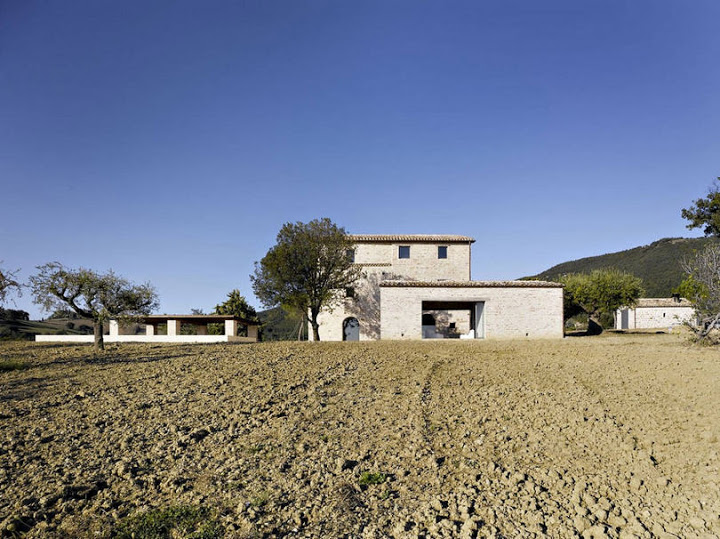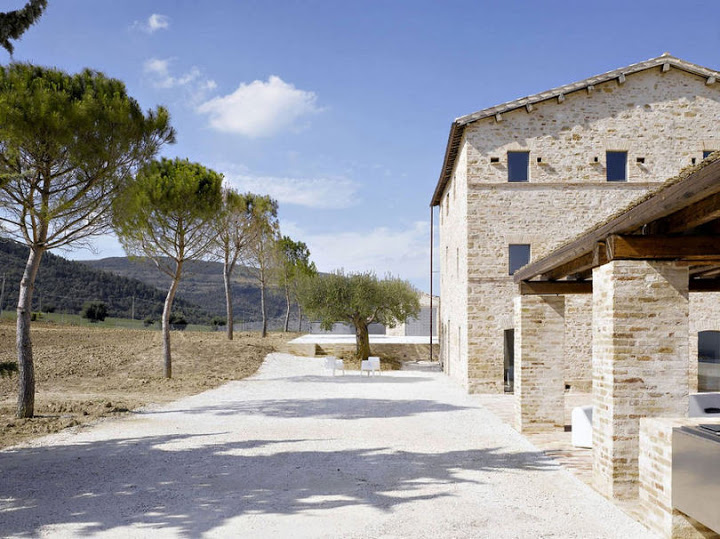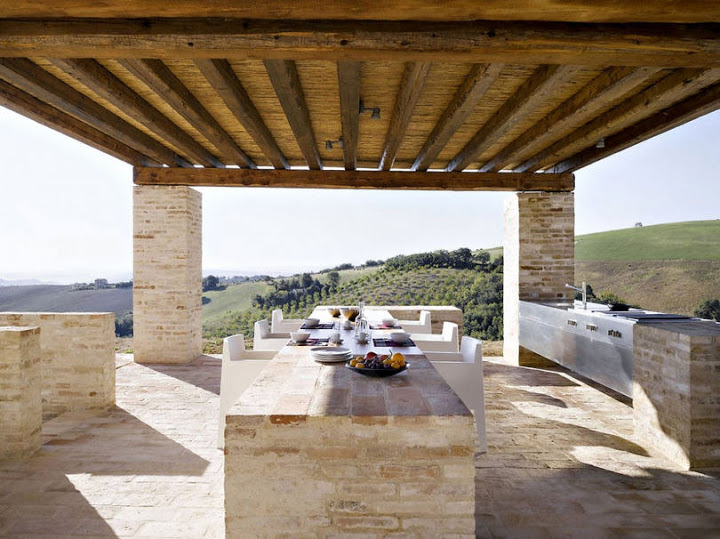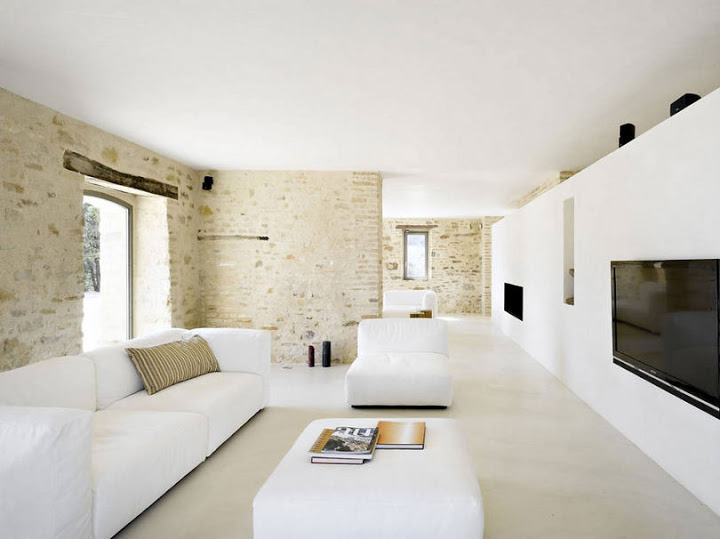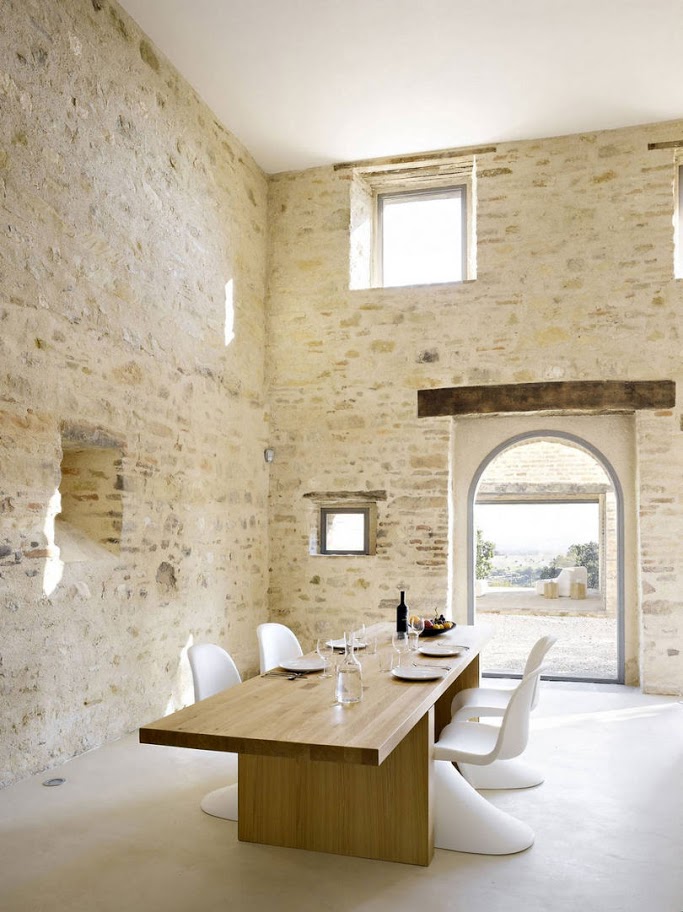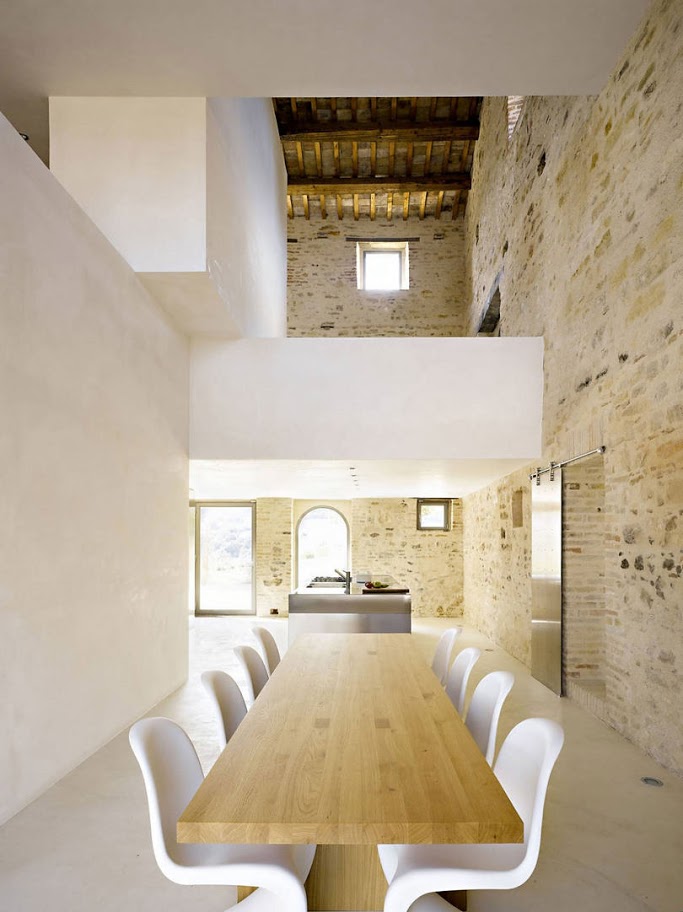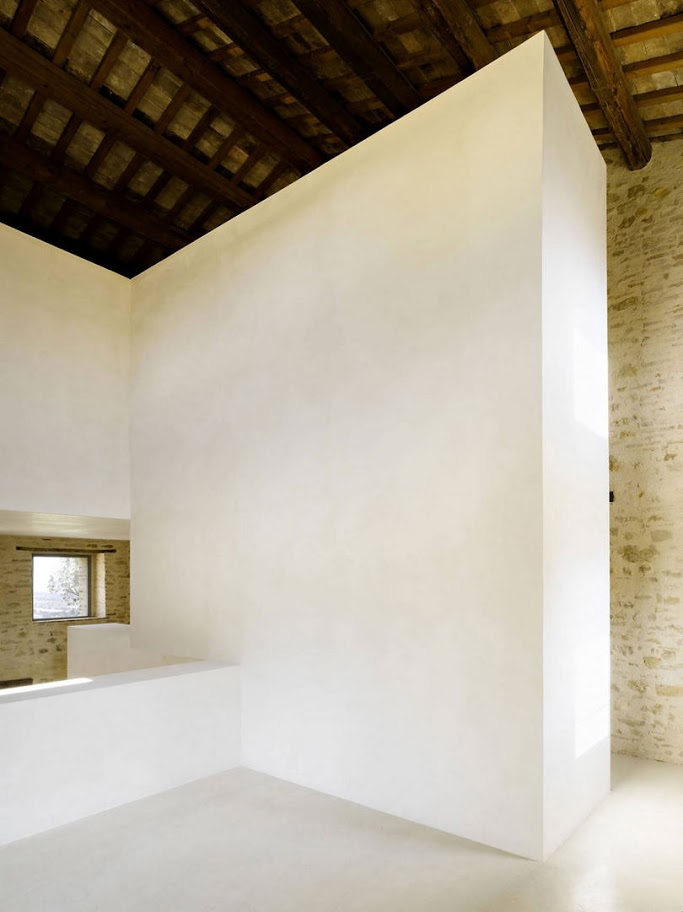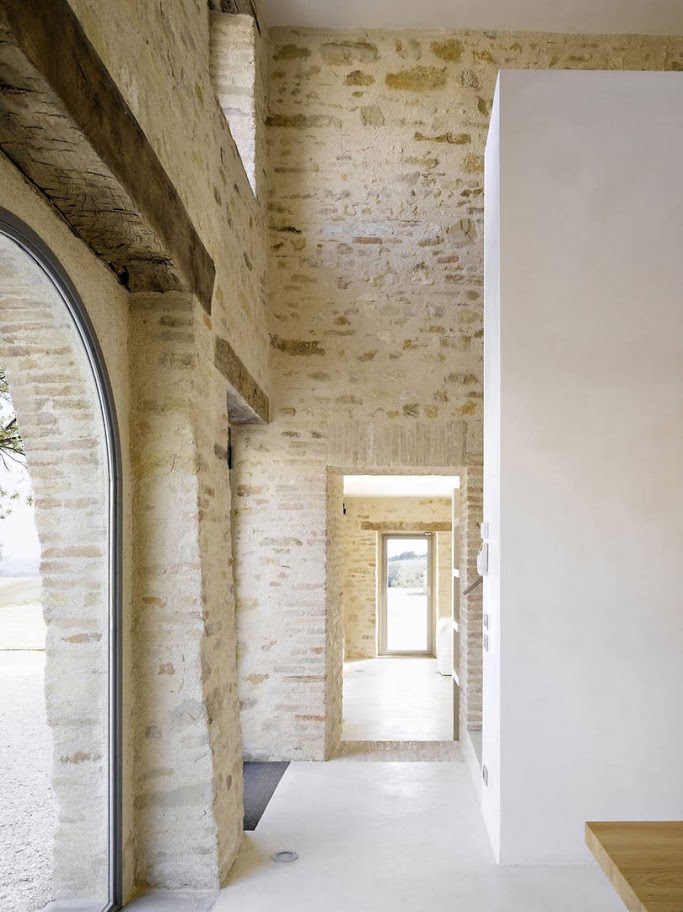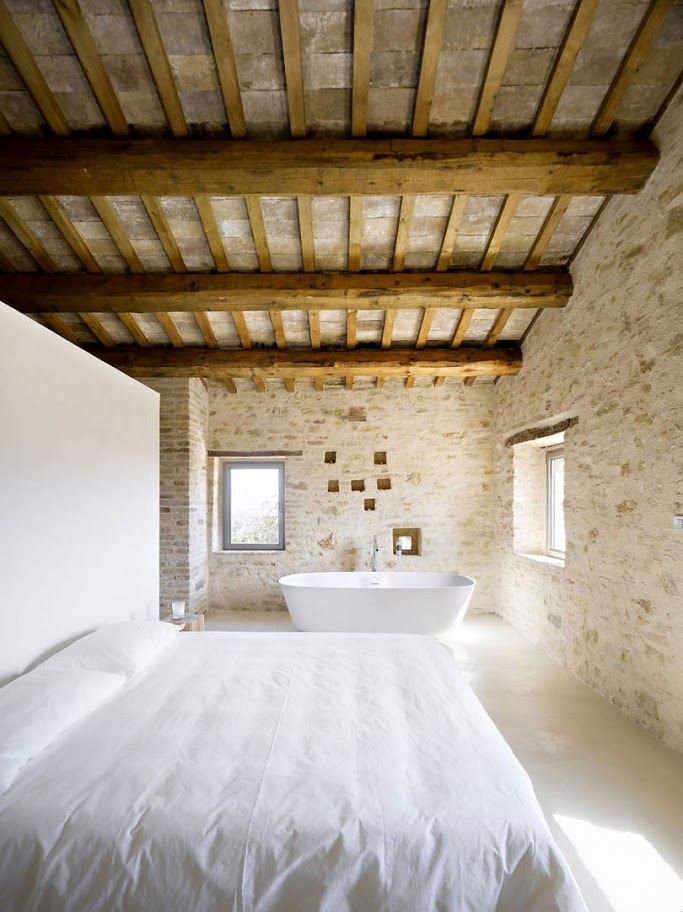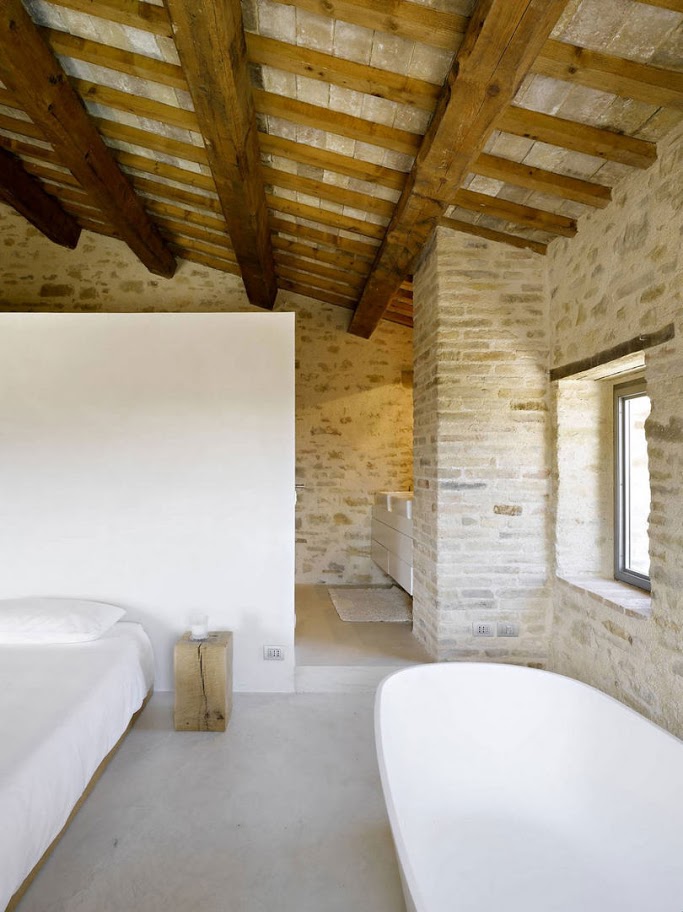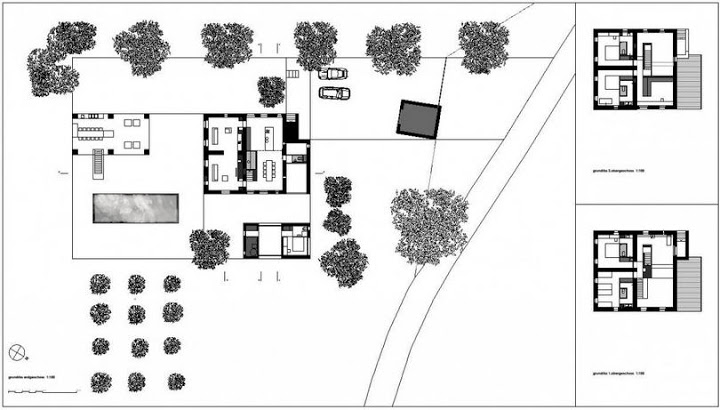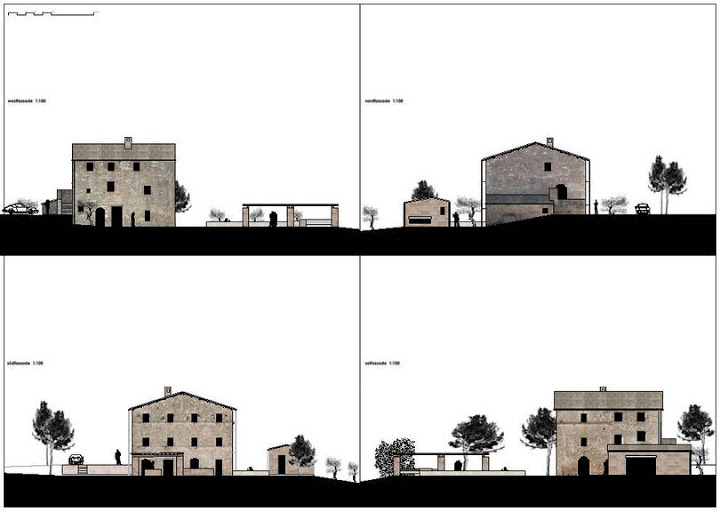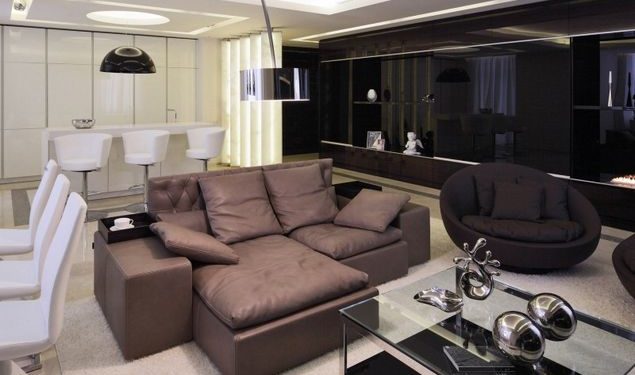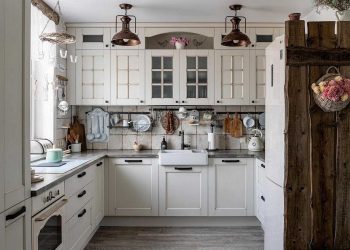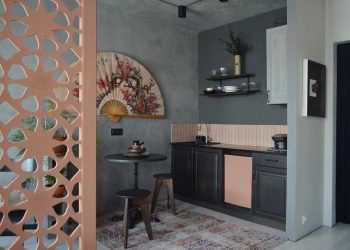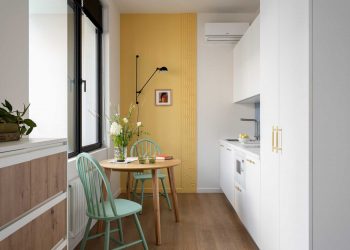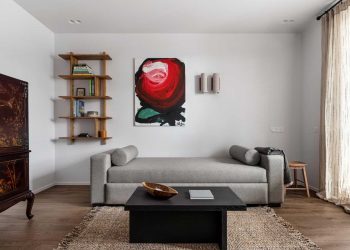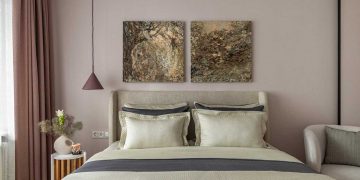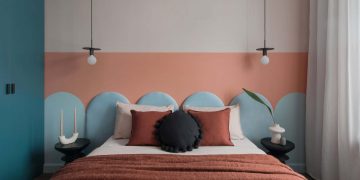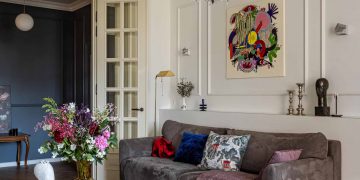Az olasz építész stúdió, a Wespi de Meuron Architekten munkája a Treia-ban található (Marche, Olaszország) Le Marche Villa, egy teljesen felújított és helyreállított, 314nm-es, 300 éves öreg farmház.
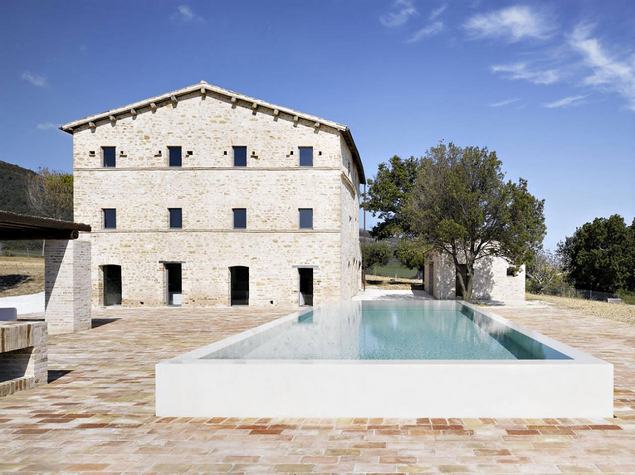
Az olasz építész stúdió, a Wespi de Meuron Architekten munkája a Treia-ban található (Marche, Olaszország) Le Marche Villa, egy teljesen felújított és helyreállított, 314nm-es, 300 éves öreg farmház.
A négy évig tartó felújítás 2010-ben fejeződött be, az öt hálószobás kis boutique hotel ma 11 vendégnek kínál szállást. Az olajligetekre néző elegáns otthon stílusába modern csavart vittek, itt nem a toszkán villákban megszokott hangulatos mediterrán, rusztikus enteriőröket találjuk, a belső terek itt inkább minimálba hajlanak, melyet a sápadt tégla- és kőfalak, fagerendák finomítanak és egyben őrzik az épület eredeti báját. A koncepció szerint a régi és új találkozik és egyesül, bizonyos elemek mint a falak és a tető eredeti formájukban kerültek helyreállításra, az új falak és a padló viszont tiszta, világos felületet kaptak, utóbbi illesztések nélkül, egy kemény és tiszta anyagból lett burkolva. Az úszómedence is ezt a koncepciót mutatja, a mediterrán kőburkolatból tiszta, fehér, feszített víztükrű modern medence emelkedik ki.
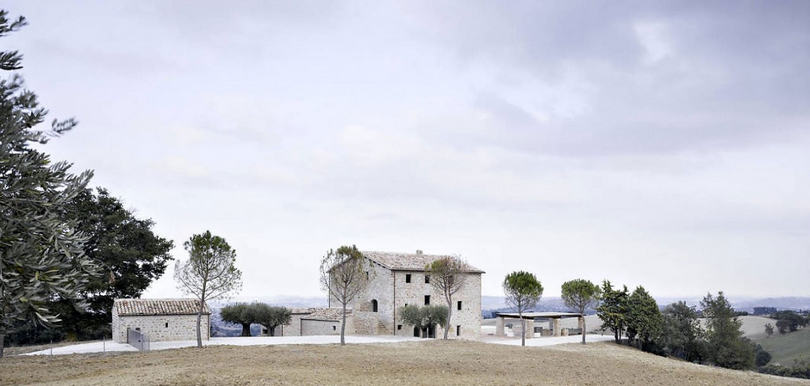
“The rural property lies in a hilly landscape about 12 km from the town of Treia. The ca. 300 years old farmhouse has three storeys, and half of the main building was damaged by fire in 1995. The outer facade of the main building is put under protection by the municipal authority. The complex was completed by two smaller volumes of one level only: the first was a herd and a furnace, the other one was a cantilever roof barn.
Intention of the project was the renovation and transformation of the property into a contemporary dwelling and holiday house, with attached guest house and pool. The masonry has been largely preserved and restored, whereas all the wood structure (intermediate floors and roof) where replaced. As part of the renewal of the static structure, the necessary reinforcing precautions for seismic safety, were integrated in an invisible manner.
The architectural language thematizes the combination of old substance and new interventions: sometimes by contrast and sometimes by merging both old and new. For example, the roof was restored in the traditional way (primary and secondary wooden beams, subview with terracotta, roof covering with „coppi“ tiles), while the new intermediate floors and new interior walls are in white plaster. The floors also are made without joints in a hard and clear material.
These new white interior surfaces help the reflection of light, giving them the feeling of largeness. In this way it was possible to maintain the relatively small historical apertures in the same dimensions and proportion, whilst all rooms are irradiated by a fresh light.
The original stone wall which divides clearly into two parts the plan of the main building has been respected and largely preserved by the intervention.The northern portion of the house was a ruin after the fire, this ruin has inspired the project. In fact an open ad airy room that goes from the ground floor to roof has been realized.”
Fotók: Hannes Henz
Via WelcomeBeyond, ArchDaily



